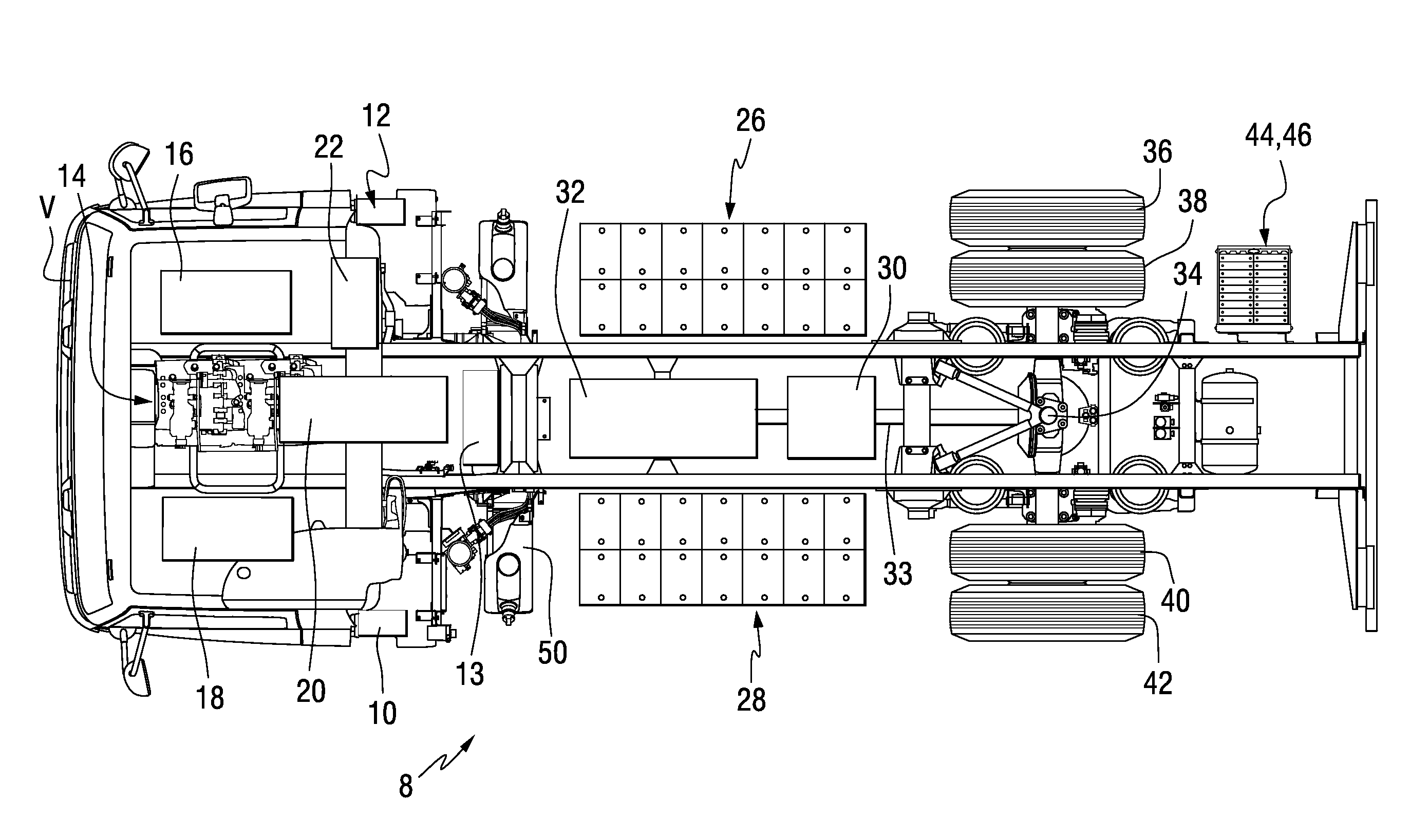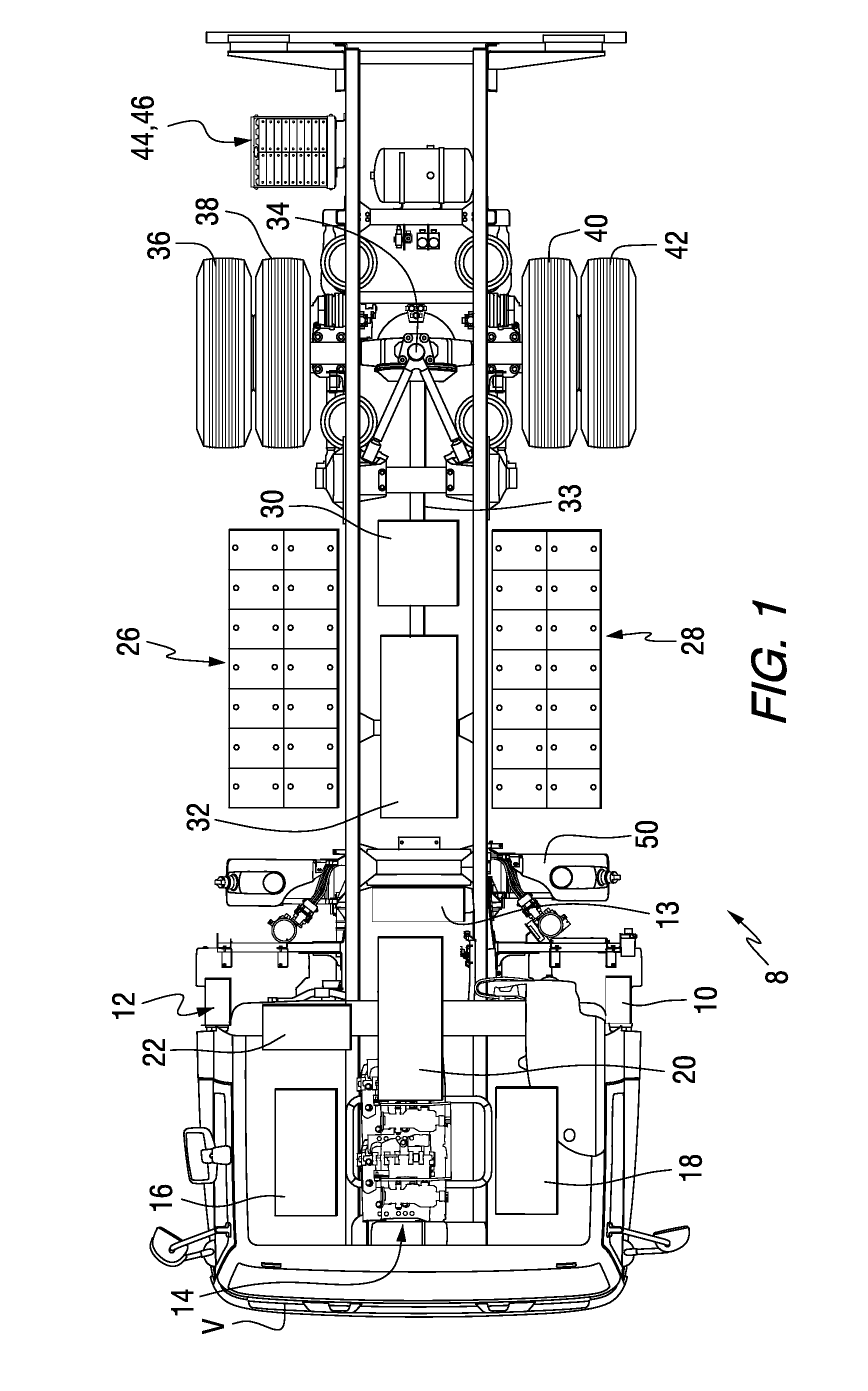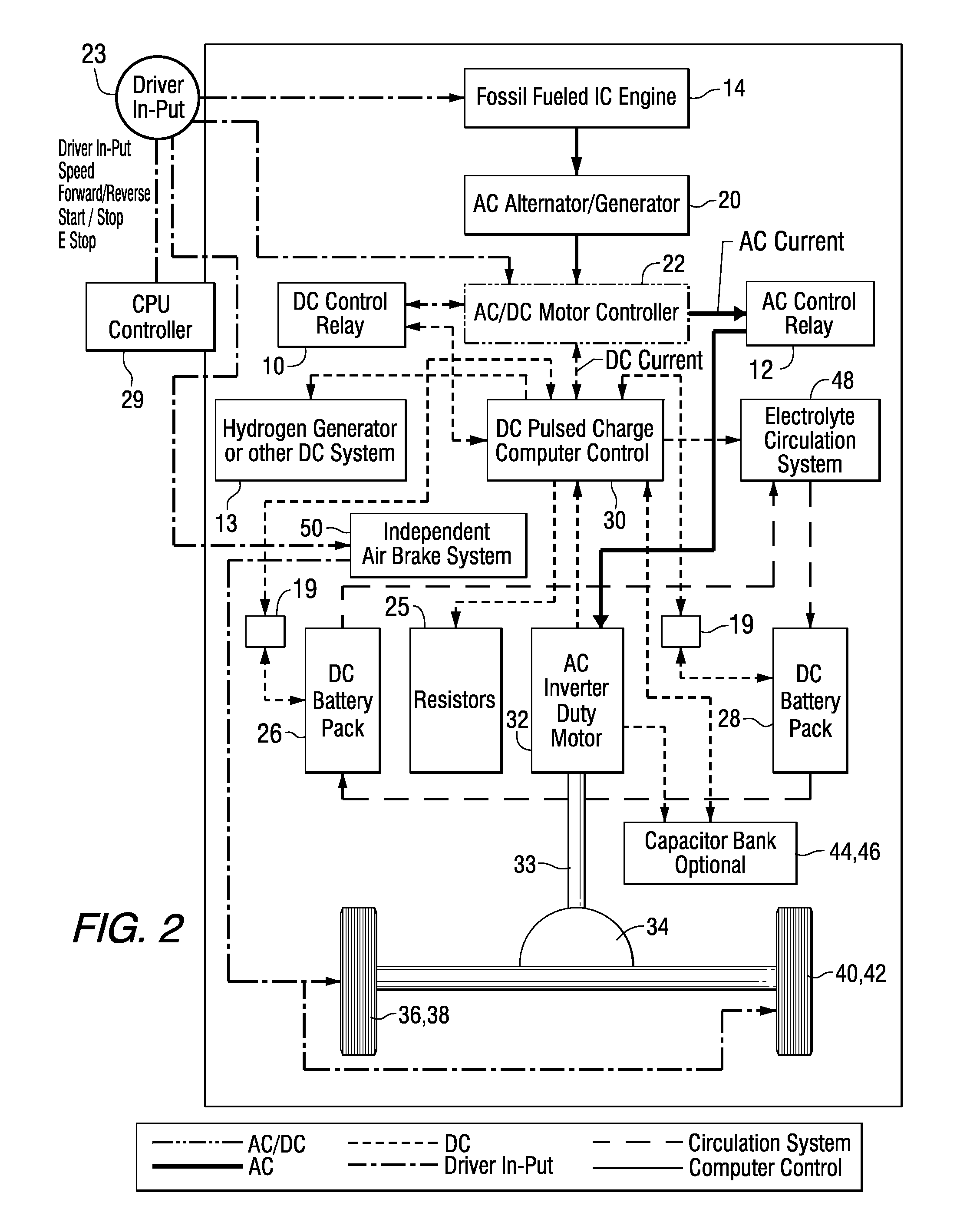Hydrocarbon Fueled-Electric Series Hybrid Propulsion Systems
a hybrid propulsion system and hydrocarbon fuel technology, applied in hybrid vehicles, propulsion by capacitors, electric devices, etc., can solve the problems of increasing the complexity of the battery management system, limiting the design feature of diesel-electric series hybrid propulsion systems, and not very efficient fossil fuel use of conventional ic engine drive trains. achieve the effect of improving the mileage performance of hydrocarbon fuel, reducing particulate emissions, and reducing the number of problems
- Summary
- Abstract
- Description
- Claims
- Application Information
AI Technical Summary
Benefits of technology
Problems solved by technology
Method used
Image
Examples
example 1
[0100]A 1989 Mack truck T was converted from a conventional diesel engine type truck to a hydrocarbon fueled electric series hybrid propulsion system 8 of the present invention. Step 1 is the removal of unnecessary components in the 1989 Mack truck T. In Step 2, the radiator, engine, transmission, fuel tanks and drive shaft of the 1989 Mack truck are removed for the conversion process. Step 3 is the installation of the AC electric motor 32 and drive shaft 33. An example of an AC electric motor 32 is available under the designation L1431A Inverter Duty manufactured by Reliance Elect. Step 4 is the alignment of the drive train with the rear differential 34. In Step 5, a gen-set GS is readied for installation. Step 6 is the installation of the diesel engine 14 and AC generator 20. An example of a hydrocarbon fueled IC engine 14 is available under Model No. 4045T manufactured by John Deere. An example of an AC generator 20 is available under Model No. 363PSL3127 manufactured by Marathon...
PUM
 Login to View More
Login to View More Abstract
Description
Claims
Application Information
 Login to View More
Login to View More - R&D
- Intellectual Property
- Life Sciences
- Materials
- Tech Scout
- Unparalleled Data Quality
- Higher Quality Content
- 60% Fewer Hallucinations
Browse by: Latest US Patents, China's latest patents, Technical Efficacy Thesaurus, Application Domain, Technology Topic, Popular Technical Reports.
© 2025 PatSnap. All rights reserved.Legal|Privacy policy|Modern Slavery Act Transparency Statement|Sitemap|About US| Contact US: help@patsnap.com



